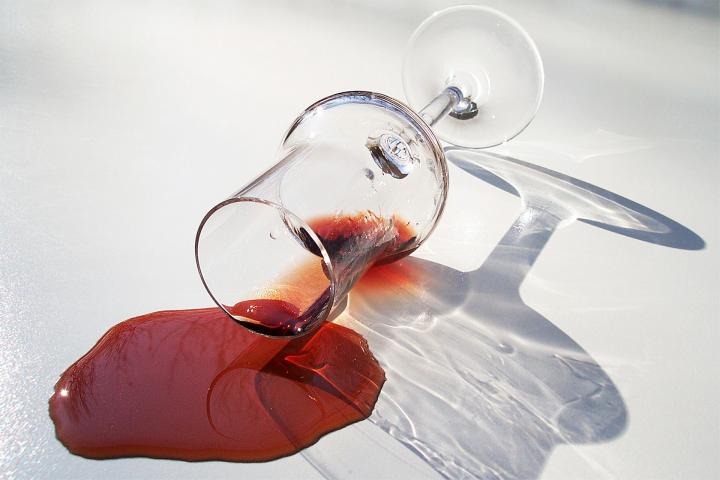
Learn how to remove stains from clothing with these tips for stain removal.
Remove Oil, Ink, Blood, Food, Wax, Mildew, Grass, and More!
ADVERTISEMENT
A fresh blood stain on clothes can be removed with hydrogen peroxide. Just use a cotton ball to apply peroxide to the stain, and it will start to lift the stain quickly. Launder as usual, if there's is still a little blood left then spray with a pre treatment like oxyclean spray. Let sit for a few minutes then launder as usual.
Great tip, thank you!
Use lighter fluid, or WD-40 to remove sticky tag adhesive from fabric or solid surfaces.. Be sure to test the fabric/surface before applying to make sure that it doesn’t harm the fabric.
Our 15 year old daughter was finially baptized at Easter Vigil last easter and Like all the other preteen and teen girls,she wore the traditional white,poofy,sleeveless,above the knees baptism dress with the matching bonnet,lace anklets and the white 'mary jane' shoes.The girls all wear the white cloth baptismal diaper with rubberpants over it under their dresses with an undershirt as their top.At her party,she sat on a chair that had pizza sauce spilled on it,and got a fairly good size orangeish stain on the back of the rubberpants.She took her outfit off at bedtime and by then the stain was dried and set in.She will be making her First Holy Communion next May,2018,and has to wear the cloth diaper and rubberpants under her communion dress as they are required for the newly baptized girls for first communion.How can we get the stain out of the rubberpants?
Why are they made to wear diapers at 15?
To Marjory-We baptized our 16 year old daughter last year at Easter vigil also and she wore the same outfit as your daughter. Her Great Aunt Lydia gave her a pair of rubberpants with a white nylon covering on them with pink ruffles across the back to wear over her cloth diaper.She too sat on something on a chair that had something spilled on it and got a stain on the back of the rubberpants and got the bottom two rows of the ruffles.Thank god it was a food stain and i used an old bottle of Basic H cleaner to get the stain out! When she made her First Communion the next month in may,i put the ruffled rubberpants on her with out her baptismal diaper,and her under shirt that she wore for the day under her communion dress.The ruffled rubberpants looked very cute under her puffy communion dress!
Our daughter is 16 and finially made her First Holy Communion this past June 2nd with the first and 2nd graders.We dressed her like the little girls in a cute,poofy,short sleeve,knee length communion dress and matching veil with the lace anklets and white patent leather shoes.We did a white tee shirt with the cloth diaper and rubberpants on her under her dress just like the little girls all wear.After her party,she took her communion dress off and was sitting at her desk in her room re-doing her nails,when she spilled the bottle of nail polish and it got the bottom of her tee shirt and the front of her rubberpants.Some one told me that non-acetone nail polish remover will take the nail polish out of the rubberpants.Does anyone know if this is true or not?
To Linda D.-Yes,the non-acetone nail polish remover does work to take spilled nail polish out of the rubberpants.Our daughter is 16 also and has been a bedwetter for over a year now and she wears the cloth pin on diapers and rubberpants to bed every night.A few times,she has dripped nail polish on her rubberpants while redoing her nails and she just wipes it off with the non-acetone remover on a kleenex.When she was confirmed back on May 19th,she wore a pair of her rubberpants with ruffles across the back under her white dress,and later on,while redoing her nails,dripped pink nail polish on the rubberpants and it was the non-acetone remover to the rescue!
Our 14 year old daughter did her 8th grade catholic confirmation the first week of june and per the parish dress code all the girls had to wear a poofy,white short sleeve dress with a veil,lace anklets and white patent leather shoes. A white tee shirt with the cloth diapers and rubberpants had to be worn under their dresses.Our daughter got grass stain on the back of her rubberpants and i got it completely out with Goo Gone! I applied the goo gone on the grass stain and rubbed it a little and it came right out! The daughter is going to be the senior flower girl in a wedding on October 14,and i am doing the cloth diapers and rubberpants on her again under her flower girl dress.
When our daughter was 14 she also was the flowergirl in her aunts wedding and her aunt gave her a pair of white rubberpants with pink ruffles across the back to wear over her diaper.I did the size 8 pampers on her with the rubberpants over it and at the dinner,she sat on a chair with something spilled on it and got a big stain on the back of the rubberpants,right in the center of the ruffles.Thru hardwork and much scrubbing with various products,i was able to get the stain completely out luckily! She has worn the ruffled rubberpants a couple times since then.









